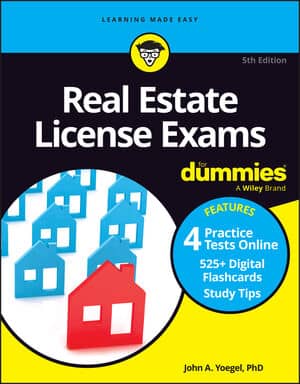The Real Estate License Exam will have a few questions about subdivisions. A subdivision is one piece of land that has been divided into two or more pieces of land. These individual pieces of property are called lots or parcels. The purpose of subdividing is to allow for the sale of the individual pieces of land. Most subdivisions are created for residences, but commercial or industrial properties may be subdivided.
Most levels of government that have control over land use adopt subdivision regulations or land-development ordinances. These regulations are different from the zoning ordinance or master plan but may be adopted or periodically revised along with those two documents. You may want to find out in your state who adopts and enforces subdivision regulations.
The main players and plans in subdivisions
Subdivisions are created by subdividers. Subdividers generally never get their hands dirty. Most of their work deals with lawyers, engineers, surveyors and sometimes developers. After a subdivision is approved, subdividers can sell the entire subdivision to a developer or builder. A subdivider can also sell individual lots with the promise to eventually put in roads, sewers, and water lines.
A developer actually, well, develops the subdivision, making physical improvements to it by putting in roads, utility lines, and other infrastructure elements. A developer sometimes builds houses for sale or sells individual lots to builders or people who want to build a house. A developer sometimes buys an approved subdivision from a subdivider or can act as the subdivider, too.
As you see there can be some overlap in these definitions, but it’s good to understand that different people can be involved in the subdivision process, taking it from raw land to finished houses.
The specific legal requirements of a subdivision vary from place to place, but a typical subdivision proposal is based on a plat map. A plat map shows how the entire property is to be subdivided, or broken down into the individual lots, by showing the precise boundaries of each lot. The area that’s being subdivided often is broken down into blocks and lots, or sections and lots.
Something that you need to check out in your state is whether it has a specific law dealing with subdivisions, what the requirements of the law are, and especially at what lot count the law takes effect.
Subdivisions and zoning laws
A subdivision must adhere to local zoning laws. Here’s an example of how zoning relates to subdivisions: You have a 50-acre piece of property that you want to subdivide. The local zoning code says that the minimum lot size for each new house is one acre.
Knowing that 10 percent of the land typically is used for roads — in this case five acres — you’re able to design the lots to take the most advantage of the land and can divide the remaining property into 45 lots.
To allow for more flexible design of subdivisions, some municipalities have adopted density-zoning and cluster-zoning ordinances.
A density-zoning ordinance permits the same overall density within the subdivision, which means the same total number of lots on the same overall size property as allowed by the zoning ordinance. The sizes of the individual lots, however, may be smaller or larger than the minimum required size.
You still can get only 45 lots out of the whole 50-acre subdivision, but each lot can be bigger or smaller than one acre. As long as the average lot size is one acre the density zoning ordinance permits flexibility of design, lot layout, and road layout.
Cluster zoning groups lots together in a relatively small area to preserve a certain portion of the property as open space. You may, for example, be able to cluster or group the lots in your subdivision into a total of only ten acres. That leaves 35 acres without any buildings.
In addition to preserving open space, cluster zoning also makes for shorter roads and water and sewer lines, which, in turn, results in savings to the developer. In some places, cluster zoning also is known as conservation zoning.
Crossing state lines for real estate purposes
The subject of interstate land sales isn’t a regulation about how land is developed but rather how it is marketed when subdivisions and land sales are discussed. And yet, it’s important enough that state test writers want you to know something about it.
Land in one state has been offered for sale to people in another state probably for as long as people and land have been together in this country. Unfortunately buying land sight unseen is risky. Although many perfectly honest dealers do business in what are called interstate land sales, unfortunately many people have been victims of fraud in these types of deals.
The Interstate Land Sales Full Disclosure Act was enacted in 1968 to minimize fraud and dishonest dealings in the interstate land sales market. The act is administered by the Department of Housing and Urban Development (HUD).
The requirements of the act apply to interstate sales of vacant, or undeveloped, lots in subdivisions of 25 lots or more. The act doesn’t apply if the lots are 20 acres or larger. However, the act requires developers to file information with HUD describing details of the project, including but not limited to utilities, recreation facilities, location of nearby communities, and soil conditions.

